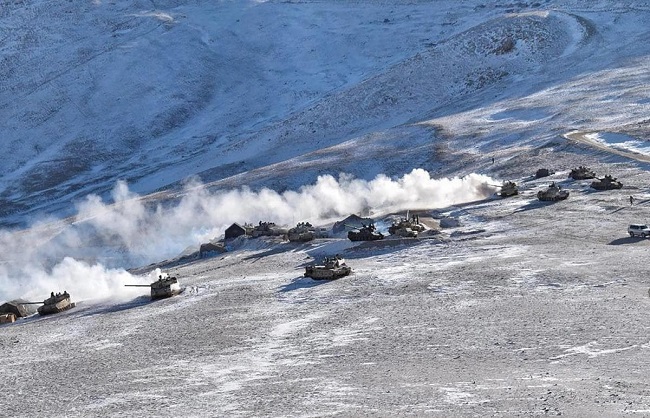New Delhi, 12 February: Within two days of the agreement on both sides of Pangong Lake, China has withdrawn more than 200 main battle tanks deployed on the south coast.
Similarly, at least 100 heavy vehicles from the Finger area of North Coast have also been reversed.
However, there was an agreement with India to repel the armoured tanks within three days, but the speed with which the Chinese Army has removed its tanks in two days has shocked the top officers of the Indian Army and national security planners.
After Pengong Lake, India’s next look is on the Depsang Plains, where China has deployed tanks and seized them.
In the same way, there are many more.
Pangong Lake, which is the main point of dispute between India and China, is about 134 kilometers long. Two-thirds of the lake, located at an altitude of 14 thousand feet above sea level, is with China, while about 45 km is with India. After the secret agreement between India and China, China started the process of retreating from Pangong Lake from 9 am on Wednesday.
The Chinese Defense Ministry also announced it by releasing a statement but India Authorized information about this from the other day (Thursday), Defense Minister Rajnath Singh gave a statement in the Rajya Sabha.
On Thursday evening, pictures of the withdrawal of forces from the Ladakh border were also revealed. Within two days, China has withdrawn more than 200 main battle tanks deployed on the south coast. China has also retreated at least 100 heavy vehicles from the finger area. In the same way, there are many more.
According to sources, the deal with Beijing came after several rounds of back-channel negotiations with Foreign Minister S. Jaishankar, National Security Advisor (NSA) Ajit Doval and their respective counterparts in China. As a result, India retained its position in eastern Ladakh and was asked to begin the process of retreating from China on the lines of ‘neither won, nor lost’.
However, India had also made it clear several times in military negotiations that if China has come first then it will have to start retreating. Sources say that the Indian side also returned their tanks and weapons but in the worst case, contingency plans are also prepared, taking full vigil given the past experiences from China. Chinese and Indian forces have to complete the deal by Saturday night.
Next settlement talks with China on Depsang Plains
The Defense Minister has also said in the statement in the House that after the complete disengagement on the northern and south sides of Pangong Lake, the remaining disputed areas will also be negotiated with China.
Therefore, India’s next look is on the Depsang Plains where China has deployed barricades by deploying tanks and two brigades.
On August 29/30 on the southern shore of Pangong Lake, China extended its deployment to the Depsang Plains after being confronted by India, in response to which India has also deployed additional troops, weapons, ammunition in the area.
Meanwhile, China has blocked Indian troops from patrolling point-10 to 13 since April last year. This is the same area where the Chinese army had also infiltrated in 2013 and the armies of the two countries had been face to face for 25 days.
Depsang Plains is strategically important because near it is Daulat Beg Oldi, the world’s highest airstrip, built by the Indian Air Force (IAF). Karakoram, the strategic pass of the Indo-China border from Depsang, is also about 30 kilometers away.
The Aksai Chin region, occupied by China, is about 7 kilometers from here. The route to Depsang goes to Karakoram Pass and Daulat Beg Oldi.
Apart from this, Chinese troops have also stayed near Hot Spring Area and Gogra Post i.e. PP 15 and PP 17. Disengagement is also to be discussed here.
After the violent clashes in the Galwan Valley on June 30, Indian and Chinese troops were back two and a half kilometers from PP-14 in Galwan and a buffalo zone has been formed here.





